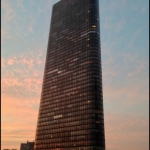About 6,000,000 Gallons Saved Last Year!! KEEP IT UP!!
April 21, 2017
Don’t Be A Drip – Keep Helping Our Community Save Water!
Residents CAN Make A Difference!
The annual budget for Water and Sewer expense for this year at Park Tower climbed from $422,700 to $467,100. That makes it responsible for about a 1% of the 3.5% assessments increased. To give you an idea how expensive that is, our bill for Natural Gas to heat the building and heat your kitchen and bathroom water is expected to be less – about $424,800.
City water and sewer prices have gone up dramatically the past several years, with the City passing increases between 15-25% every year since 2010. AND, over the next 5 years, the cost of water will continue to increase by as much as 5% each year and the tax will increase 30%.
What does $467,100 mean to you?
It works out annually to $630/unit and about $311/person.
That works out monthly to $52.50/unit and $26/person.
To figure how much you pay, multiply the units % of ownership by $467,100.
For example Unit 7C (the Office) would be .109% x $467,100 = $509/year.
How much water?
Last fiscal year Park Tower consumed about 46,500,000 Gallons.
That’s about 62,655 Gallons per unit.
That’s about 31,000 Gallons per person.
How does this impact assessments?
Just considering assessments, water/sewer is about 10% of our expenses.
Every 10% water expense moves, would move assessments about 1%.
The difference varies nearly directly; save about 10% water, save about 1% assessments!
The good news? As a community we used about 6,000,000 less last fiscal year, than the year prior. That is about 10% less. The bad news? The increase in costs, previously mentioned which more than wiped out what we saved. But if we can hold that savings, or even carve out more, it could help us erode the effect the cost increases have each year.
Our management and engineering team are always looking at ways internally we can cut back, incorporating water savings efforts into anticipated projects and trying to identify any maintenance issues that need to be addressed. Of course this may help lower the expense.
But Park Tower residents and owners who live here are the folks who could do the most to move the needle and bring this cost down.
Following are some simple and smart steps to reduce water use:
Report Maintenance Issues Right Away! The drippy or leaky faucet, or that toilet that constantly runs…that’s money constantly running down the drain! Call the office and put in a work order. We don’t charge labor to address most issues like this. Yes, if you need to replace your faucet or toilet, the owner will need to foot some of the cost. But over time, if you need to replace your toilet, it may pay for itself within the first year the new one is in place! And, a faucet drip rate of one drip per second can waste more than 3,000 gallons per year.
Turn It Off! Whether you are washing dishes, brushing your teeth or running the shower or bath, don’t let water needlessly go down the drain. Sure, if it takes a minute to brush your teeth, that’s just one minute. But if you brush your teeth at least twice a day, that’s over 12 hours per year. If you leave the water on while you brush, at that rate it’s like leaving the water running for over 12 hours.
Improve Your Flush! Consider installing a high efficiency labeled toilets, some of which use 20 percent less water than the average toilet, while offering equal or superior performance. Compared to older, inefficient models, some of the toilets available today can alone save $90 annually per household, and $2,000 over their average lifetimes.
Also – even if it does not seem like your toilet is constantly running, if you are really adventurous, check for toilet leaks by adding food coloring to the tank. If the toilet is leaking, color will appear in the bowl within 15 minutes. (Make sure to flush as soon as the test is done, since food coloring may stain the tank.)
Replace or Accessorize Your Faucet! There are aerators available which reduce water use and that can be a very cost-effective ways to save water. Also consider replacing the entire faucet with a high efficiency labeled model. Either way, you can increase the faucet’s efficiency by about 30 percent without sacrificing performance. “Water Sense” is a label you can look for, for faucets and fixtures which are considered efficient by the EPA. Visit www.epa.gov/watersense for more about this program.
To Shower or Not To Shower? A full bathtub can require up to 70 gallons of water, while taking a 5-minute shower uses only 10 to 25 gallons. Mic dropped.
AND Lighten Your Loads! Wash only full loads of dishes and clothes or lower the water settings for smaller loads. Also, consider replacing your old washing machine with a high-efficiency, ENERGY STAR® labeled model, which uses up to 50 percent less water and electricity.
What’s Park Tower doing? The Condo Association is doing several things to identify ways to save. Our maintenance team has been laser focused on catching any pipes, pumps or equipment which may be leaking or wasting water. Many of the plumbing improvements we have done over the past decade have incorporated efforts to save both water and energy, such as installing high efficiency toilets during the riser projects and an ENERGY STAR® rated cooling tower. Upcoming, we expect to replace some outdoor planter irrigation sprinklers with drip systems, so we lose less water to the wind and elements.
As the cost of water goes up, even simple common sense changes in our routine can add up. The more our habits change and the less water we use in the long term, means all the more we save in dollars!








